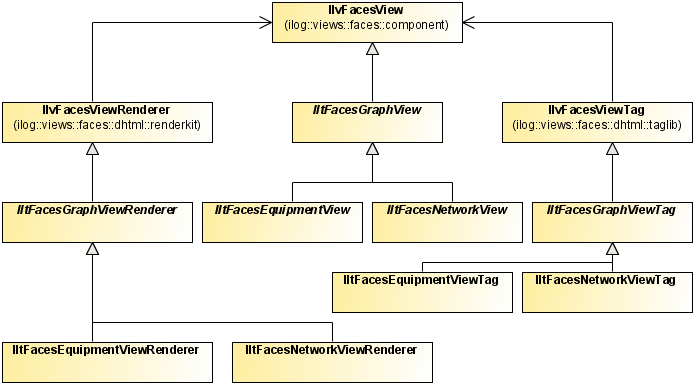The graph architecture
The Rogue Wave JViews TGO JSF library is a set of JavaServer™ Faces components that allow you to display and interact with business objects and data in the following formats:

A network of nodes: the network JSF component.

Items of equipment composed of cards, ports and LEDs: the equipment JSF component.
Like the
IlpNetwork and
IlpEquipment Swing components, the network and equipment JSF components share the same architectural design. In a high-level abstraction, the network and equipment JSF components play the role of the view (
IlpNetworkView and
IlpEquipmentView) as they are responsible for displaying the graphic representation of the model on the client screen.
Like the
IlpNetworkView and
IlpEquipmentView, which are based on
IlpGraphView, the network and equipment JSF components are based on an iGraph that cannot be directly used in a JSP™ file. This Graph component is defined by a component abstract implementation,
IltFacesGraphView, an abstract renderer,
IltFacesGraphViewRenderer, and an abstract tag implementation,
IltFacesGraphViewTag.
The Graph component is based on the view JSF component declared in the JViews Framework JSF library. It inherits all the features and characteristics of the view JSF component. In addition, it extends its functionality to display the specific JViews TGO business objects by using an underlying IlpGraphView instead of a generic IlvManagerView. The following class diagram shows these dependencies:
Graph JSF architecture
Copyright © 2018, Rogue Wave Software, Inc. All Rights Reserved.
